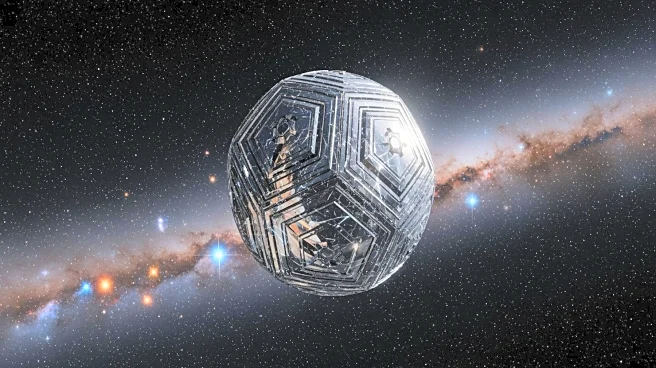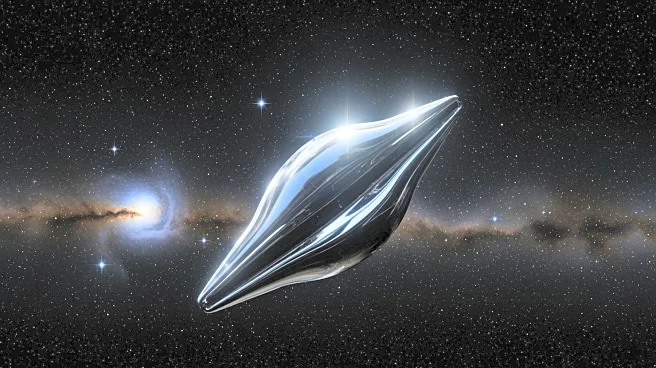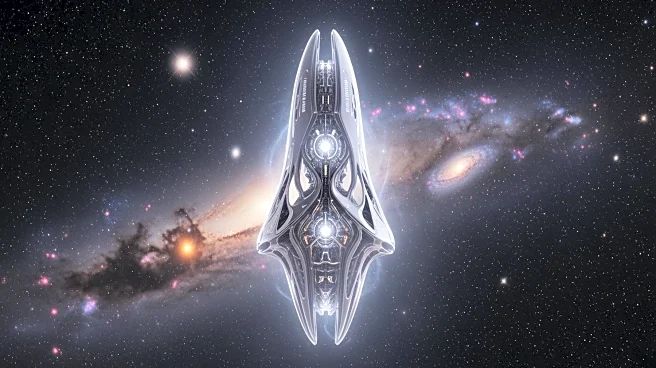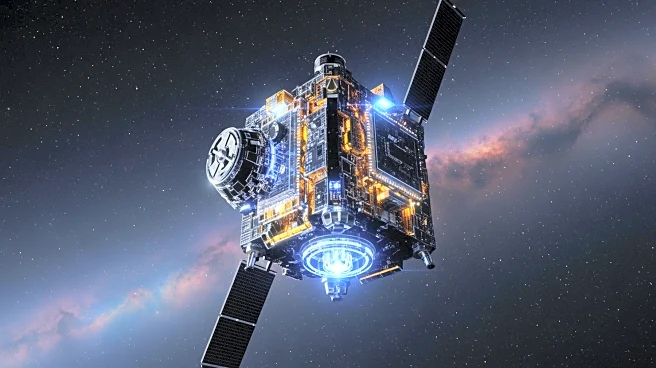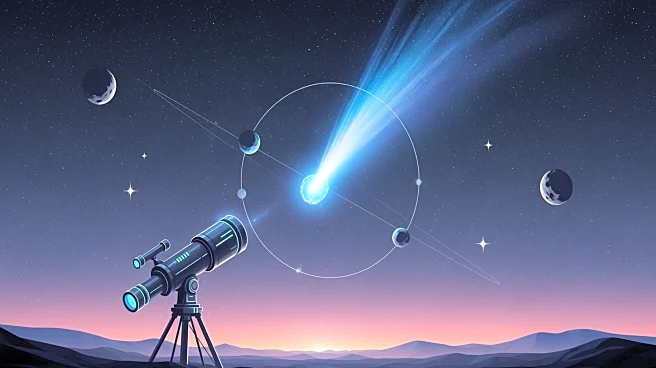What's Happening?
The interstellar object 3I/ATLAS, detected in 2025, is sparking debate among astronomers about its natural or artificial origin. Unlike typical comets, 3I/ATLAS exhibits unusual chemical compositions,
such as a nickel-rich and low-iron makeup, and follows a trajectory closely aligned with the solar system's ecliptic plane. These characteristics have led some scientists to consider the possibility of an artificial origin, although the object does not display non-gravitational acceleration like the previously detected 1I/Oumuamua. Observations from the James Webb Space Telescope and other instruments have confirmed active outgassing, indicating comet-like behavior, but the object's unique traits continue to intrigue researchers.
Why It's Important?
The study of 3I/ATLAS could provide valuable insights into the nature of interstellar objects and the potential for artificial structures in space. If 3I/ATLAS is confirmed to be of artificial origin, it would have profound implications for our understanding of extraterrestrial life and technology. Even if it is a natural object, its unusual characteristics could challenge existing models of comet formation and behavior. The findings could also enhance our ability to detect and study interstellar visitors, contributing to the broader field of astronomy and the search for extraterrestrial intelligence.
What's Next?
Upcoming observations of 3I/ATLAS by spacecraft near Mars and Jupiter may provide more detailed data on its composition and behavior. The European Space Agency's Comet Interceptor mission, set to launch in the future, could potentially target similar interstellar objects for close study. As more data becomes available, scientists will continue to analyze 3I/ATLAS to determine its origin and significance. The scientific community remains open to various hypotheses, and further research could lead to breakthroughs in our understanding of interstellar phenomena.
